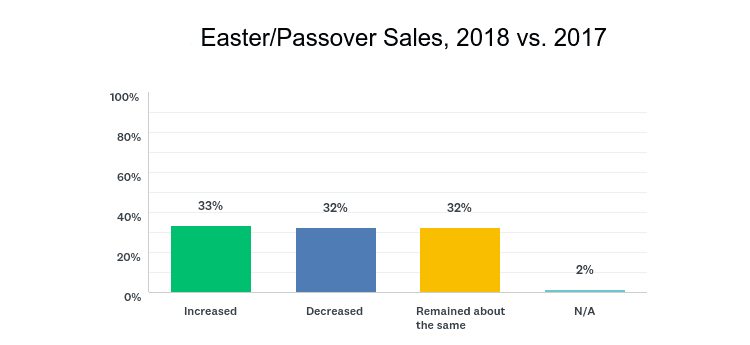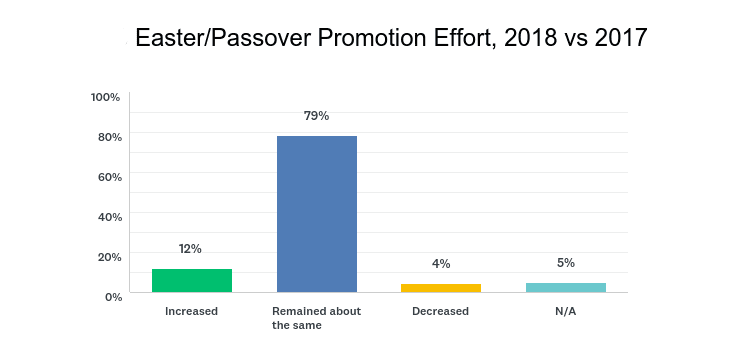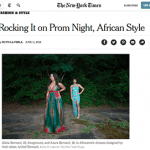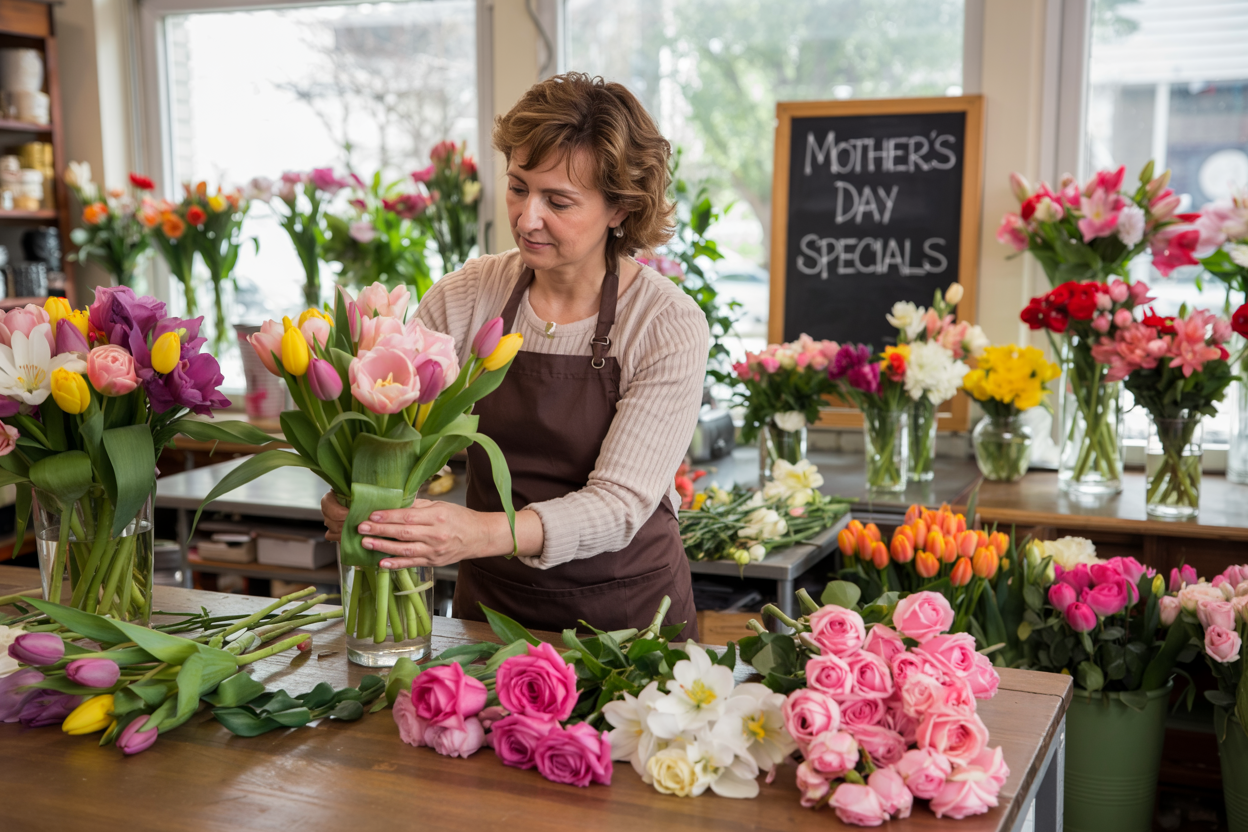
Source: SAF 2018 Women’s Day & Easter/Passover Surveyed April 8 to 2,939 retailers. 5.9 percent response rate.
Easter and Passover sales were a mixed bag this year. About a third of retailer members responding to the Society of American Florists’ post-holiday survey said sales for those holidays increased; a third saw a decrease. The rest said sales tracked with returns in 2017.
Timing of the holidays played a factor among both florists who saw an uptick and those who saw a dip. Easter Sunday was April 1 and Passover was March 30 to April 7.
“Easter performs better when it’s in April, not March,” wrote one respondent in Colorado.
“I think Passover being the same weekend as Easter, and falling on a Friday, folks were more likely to want to send flowers to family,” wrote a retailer in New Jersey.
On the other hand, “Our sales were disappointing, and we think it was due to numerous school breaks occurring that week, as well as being earlier than last year with cooler weather,” wrote a retailer in Illinois. (Last year Easter fell on April 16; Passover was from April 10-18).
One hundred twenty-nine SAF retailer member florists responded to the survey.
Nearly 80 percent of respondents said they promoted Easter/Passover at about the same level this year, as compared to 2017.
Among those florists who saw an increase this year, about a quarter said the uptick was between one and five percent. Among those who saw a decrease, about 21 percent said the decline was between one and five percent.

Source: SAF 2018 Women’s Day & Easter/Passover Surveyed April 8 to 2,939 retailers. 5.9 percent response rate.
Top factors behind increased sales, according to respondents included: regional economy (26 percent), the weather (21 percent) and increased shop advertising (16 percent).
“Outside displays on the sidewalk helped to bring in walk-in sales, and reminder postcards went out two weeks before the holiday to help phone sales,” wrote a florist in Connecticut, who suggested local florists need to “get involved with your local places of worship and promote flowers and plants for decorations.”
“The fact that Easter fell when it did helped keep Easter Lilies fresher,” wrote a Virginia florist. “Last year it was very late and not good on the lilies.”
Top factors behind decreased sales included: the weather (26 percent); competition from mass marketers/supermarkets (23 percent) and the regional economy (14 percent).
“When I first started in business Easter was pretty big,” wrote a florist in Pennsylvania. “Every year, it gets smaller. Big box stores right down the street sell cheaper than I can buy.”
Many florists noted that Easter in particular has become a less formal holiday — with fewer customers ordering flowers for the holiday.
“Women don’t wear dresses so no need for corsages,” wrote a Connecticut florist. “No one eats at the dining room table, no need for centerpiece. The younger generation don’t appreciate Easter lilies.”
A florist in Oklahoma called it “a dwindling holiday.”
“Each year I make calls to previous customers to secure orders and feel lucky when they want to re-order again,” wrote the respondent. “We mostly rely on larger churches that want flowers and or Easter lily plants for services on Sunday morning for our Easter business. I’m happy that we still sell a couple hundred Easter lilies and several flower arrangements but this is much less than we used to do.”
Other highlights from the survey:
- Thirty-eight percent said the number of transactions this year remained about the same; 29 percent said they increased; 27 percent said they decreased.
- On average, respondents said that in the two weeks leading up to the two holidays about 71 percent of their sales were cut flowers, 26 percent flowering and green houseplants and 5 percent outdoor bedding and garden plants.
- Respondents said about 50 percent of holiday orders came in by phone; 22 percent came in via walk-in; 19 percent via shop website; 10 percent via wire services and order gatherers.
- The average transaction was $58. In 2015, the last time SAF surveyed the holidays, the average transaction for Easter/Passover sales was $55.
The survey also queried members on results from International Women’s Day on March 7. Look for information on those returns in next week’s issue of E-Brief






